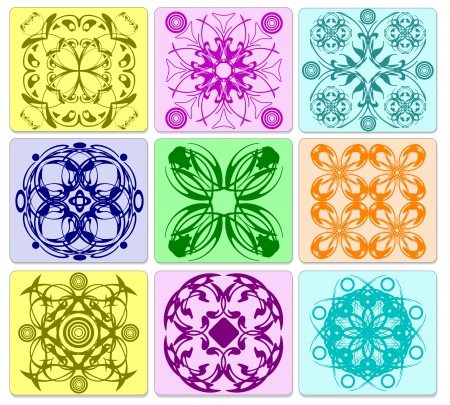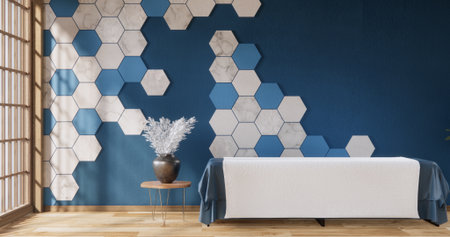Introduction to British Tiling and Wall Treatments
From the grand Victorian townhouses of London to the charming cottages of the Lake District, tiles, splashbacks, and wall treatments have played a pivotal role in shaping the character of British interiors. These elements are far more than mere practical solutions for protecting walls from daily wear; they are woven into the fabric of British domestic life, blending centuries-old traditions with modern flair. The British approach to tiling and wall finishes is marked by a keen appreciation for both heritage and innovation—think classic metro tiles in Edwardian bathrooms sitting comfortably alongside bold geometric splashbacks in contemporary kitchens. This enduring significance lies not only in their functional benefits but also in their ability to reflect personal style, local craftsmanship, and evolving trends. As we explore these surfaces in detail, it becomes clear that British homes use tiles, splashbacks, and wall treatments as expressive canvases, effortlessly marrying timeless elegance with fresh design perspectives.
Classic British Tile Styles: Heritage Meets Modernity
When considering tiles, splashbacks, and wall treatments in British homes, the conversation naturally turns to the country’s rich design heritage. Classic British tile styles have endured through generations, evolving to meet modern tastes while preserving their unique character. The following explores iconic tile choices—Victorian, Edwardian, and metro tiles—and examines how these are interpreted in today’s interiors.
Victorian Tiles: Bold Patterns and Geometric Charm
Victorian-era tiles are synonymous with intricate geometric patterns and a palette of deep, earthy tones. Traditionally seen in grand entrance halls or around fireplaces, these tiles are now often used as statement floors in hallways or even contemporary bathrooms. Their enduring appeal lies in their ability to add both drama and authenticity to a space.
Edwardian Elegance: Subtlety and Soft Hues
While Victorian styles favour complexity, Edwardian tiles embrace simplicity and lightness. Characterised by softer pastel colours and floral motifs, Edwardian designs reflect a move towards brighter, airier interiors. These tiles lend themselves beautifully to kitchens and conservatories, where they bring a touch of understated grace.
Metro Tiles: Industrial Roots, Urban Chic
No discussion of British tile trends would be complete without mentioning metro tiles. Originally inspired by the London Underground, these bevelled-edge rectangles have become a staple in modern British homes. Their versatility allows them to work equally well in period properties and new builds alike—used as kitchen splashbacks or bathroom walls for a crisp, clean look.
Comparing Classic Tile Styles in Contemporary Use
| Tile Style | Historic Context | Modern Adaptation | Popular Locations |
|---|---|---|---|
| Victorian | Geometric patterns; deep colours | Mosaic floors; feature walls | Hallways, Bathrooms |
| Edwardian | Pale hues; floral motifs | Subtle backsplashes; fireplace surrounds | Kitchens, Conservatories |
| Metro | Bevelled-edge; underground stations | Sleek splashbacks; shower walls | Kitchens, Bathrooms |
The fusion of heritage with modern aesthetics enables British interiors to celebrate tradition without sacrificing practicality. By reimagining classic tile designs through contemporary palettes and layouts, homeowners achieve spaces that feel timeless yet entirely current—a true testament to the ongoing influence of British style on everyday living.

3. Practical Splashbacks: From Utility to Statement Feature
Splashbacks have evolved far beyond their original, purely functional role in British homes. Once installed solely to protect kitchen and bathroom walls from splashes and stains, they now serve as a canvas for personal style while maintaining their essential practicality. The British approach to splashbacks is distinctly pragmatic: homeowners seek materials and designs that offer both durability and an enduring aesthetic, ensuring ease of upkeep in busy family spaces.
Material Matters: Balancing Tradition and Innovation
Traditionally, ceramic tiles have dominated the British splashback landscape due to their resilience and classic charm. However, recent years have seen a surge in alternative materials such as glass, stainless steel, composite stone, and even waterproof wall panels. Glass splashbacks, in particular, are favoured for their seamless appearance and wipe-clean finish—ideal for bustling kitchens or high-moisture bathrooms. Meanwhile, metro tiles—a nod to Victorian and Edwardian heritage—remain perennially popular for their ability to blend nostalgia with modern utility.
Patterns and Colourways: Subtle Statements or Bold Contrasts?
British tastes often lean towards understated elegance, so neutral palettes—think soft greys, sage greens, or classic whites—continue to be a staple choice. Yet there is a growing appetite for bolder statement features; patterned tiles with geometric motifs or heritage-inspired prints offer a chance to inject personality without overwhelming the space. Herringbone layouts, chequerboard arrangements, and decorative borders provide visual interest while keeping within the bounds of timeless design.
Practicalities: Low-Maintenance Solutions for Everyday Living
Ease of cleaning is paramount in British households. Non-porous surfaces like glass or glazed tiles prevent staining and mould growth—a must for kitchens prone to sauce splatters or bathrooms exposed to daily steam. Many prefer grout lines kept to a minimum or treated with mould-resistant sealants, reducing maintenance worries over time. Furthermore, modular wall panels are gaining traction thanks to their quick installation and hassle-free upkeep, aligning perfectly with the British penchant for straightforward solutions that stand the test of time.
Ultimately, whether you’re seeking a subtle backdrop or a striking focal point, British splashback choices reflect a harmonious blend of style-consciousness and hard-wearing practicality—ensuring that these vital wall treatments continue to meet the demands of contemporary living while honouring the nation’s distinctive design sensibilities.
4. Wall Treatments Beyond Tiles: Paints, Papers, and Panelling
While tiles and splashbacks are foundational to many British interiors, wall treatments in the UK have evolved far beyond these classics. Today, homeowners are increasingly adventurous, embracing a variety of textures, colours, and finishes to create spaces that reflect both heritage and contemporary tastes. This section delves into three popular wall covering techniques currently making waves across Britain: painted finishes, statement wallpapers, and the revival of traditional panelling.
Painted Finishes: Modern Colour Stories
Paint remains one of the most versatile choices for wall treatment in British homes. From the muted elegance of Farrow & Ball’s historic palettes to bold, saturated tones inspired by the British landscape, paint allows for personal expression while being easy to update. Feature walls in deep navy or forest green bring dramatic flair, while lighter shades evoke the understated charm of Georgian and Victorian interiors. Matte finishes are particularly favoured for their sophisticated look and ability to mask minor imperfections common in older properties.
Bold Wallpapers: Patterns with Personality
The resurgence of wallpaper in the UK is hard to ignore. British designers such as William Morris have long celebrated intricate patterns and botanical motifs, a tradition continued by modern brands like Cole & Son and Little Greene. Homeowners now use wallpaper not just as a backdrop but as a focal point—think maximalist florals in living rooms or whimsical prints in cloakrooms. Metallic accents and textured papers add another layer of depth and tactile interest.
The Return of Panelling: Classic Meets Contemporary
Wood panelling has experienced a notable renaissance in British interior design. Once reserved for stately homes and period properties, it’s now reimagined for modern settings—shaker-style panels in hallways, half-height wainscoting in bathrooms, or full-height Georgian-inspired grids in dining rooms. Panelling adds architectural character while also offering practical benefits such as insulation and protection from scuffs.
Comparing Popular Wall Treatments in the UK
| Treatment Type | Key Features | Best For |
|---|---|---|
| Painted Finishes | Wide range of colours; easy to refresh; matte or eggshell finishes | All rooms; quick updates; period homes seeking authenticity |
| Wallpaper | Diverse patterns/textures; makes a statement; can be bold or subtle | Feature walls; bedrooms; cloakrooms |
| Panelling | Adds texture/depth; improves insulation; traditional yet versatile | Living rooms; hallways; period property restoration |
British Style Insight:
The current trend across Britain is to blend these wall treatments for a layered effect—pairing panelled lower walls with statement wallpaper above, or using rich paint colours to highlight architectural details. The result? Interiors that feel rooted in tradition yet entirely fresh—a testament to the ever-evolving character of British design.
5. Selecting Materials to Suit British Homes and Climate
When choosing tiles, splashbacks, and wall treatments for British interiors, it’s essential to consider the UK’s unique weather patterns and housing stock. The interplay between dampness, condensation, and ever-shifting temperatures means that not all materials perform equally well in every setting. Here’s a guide to making practical yet stylish choices that withstand Britain’s climatic quirks.
Understanding the Impact of Damp and Condensation
Much of the UK experiences high humidity, leading to persistent issues with damp and mould, particularly in period properties or poorly ventilated spaces. When selecting materials for kitchens and bathrooms, prioritise those that resist moisture absorption. Ceramic and porcelain tiles are classic British favourites thanks to their non-porous nature; they repel water and are easy to wipe down—crucial for splashbacks behind sinks or hobs. Glass splashbacks are also increasingly popular in modern homes, offering seamless surfaces that prevent mould growth and make cleaning a breeze.
Temperature Fluctuation: Choosing Resilient Surfaces
British weather is notoriously unpredictable. Central heating systems can cause rapid shifts from chilly mornings to warm afternoons indoors, putting strain on some wall finishes. Opt for materials with proven durability under changing conditions: natural stone tiles like slate or granite hold up well against expansion and contraction, while engineered wall panels designed for wet rooms provide added stability in fluctuating environments. Avoid untreated wood in areas prone to moisture—it warps easily unless sealed professionally.
Sustainable Solutions for Traditional and Modern Homes
With the rise of sustainability in British design, many homeowners seek eco-friendly options that don’t compromise on performance. Recycled glass tiles or responsibly sourced ceramics offer green credentials while meeting the demands of a damp-prone climate. For listed or heritage properties, lime plaster remains a traditional choice; it allows walls to ‘breathe’, minimising trapped moisture without sacrificing authenticity.
Blending Practicality with Aesthetic Traditions
The right material balances functionality with British style sensibilities—from Victorian metro tiles in city terraces to rustic terracotta in countryside cottages. Consider how colour and finish interact with natural light (often scarce during UK winters) and how textures can add warmth to utilitarian spaces. Ultimately, investing in high-quality finishes tailored to your home’s era and exposure will keep your walls looking smart—and standing strong—no matter what the British weather brings.
6. Sustainable and Local Sourcing: Going Green in British Design
The modern British approach to tiles, splashbacks, and wall treatments is increasingly defined by a commitment to sustainability and local sourcing. As environmental consciousness becomes deeply woven into the fabric of daily life, homeowners and designers alike are seeking eco-friendly solutions that marry aesthetic appeal with ethical responsibility.
Eco-Friendly Materials: Innovation Meets Tradition
British interiors are seeing a marked shift towards the use of recycled materials, low-VOC finishes, and natural alternatives. Tiles made from reclaimed ceramics or glass, splashbacks crafted from recycled metals, and wall coverings produced using water-based inks are not only kinder to the planet but also add unique character to living spaces. This mindful material selection reflects a broader desire to reduce carbon footprints without sacrificing style or quality.
Supporting Local Craftsmanship
There is a renewed appreciation for local artisanship in the UK’s design landscape. By choosing tiles handcrafted in Stoke-on-Trent or bespoke splashbacks from small studios in Cornwall, homeowners champion British heritage while reducing transportation emissions. These locally sourced products often come with rich backstories—each pattern or glaze echoing regional history and craftsmanship passed down through generations.
Sustainable Choices Shaping Contemporary Spaces
Sustainability is now a defining element of British interiors, influencing not just what materials are chosen but how spaces are conceived and maintained. Durable finishes that age gracefully, easy-to-repair surfaces, and modular wall treatments all contribute to reduced waste over time. These choices reflect a distinctly British pragmatism—a blend of thoughtful design and everyday practicality that ensures beautiful interiors endure for years to come.
7. Maintenance and Care Tips for British Homes
Expert Strategies for Longevity
In the heart of every British home, tiles, splashbacks, and wall treatments are put to the test by the country’s famously unpredictable climate and the daily bustle of family life. Whether you have classic metro tiles in a Victorian kitchen, bold patterned splashbacks in a contemporary flat, or textured wallpapers in a period property, proper care ensures your choices remain as stunning as the day they were installed. Here, we provide expert advice tailored to the unique challenges and lifestyle demands found across the UK.
Understanding Local Conditions
British weather can be notoriously damp, leading to challenges like mould, mildew, and staining—especially in kitchens and bathrooms. Opt for grout sealants that offer moisture resistance and consider anti-fungal treatments for areas prone to condensation. For rural homes or properties near the coast, salt air and mud can be particularly tough on finishes; regular gentle cleaning with pH-neutral solutions helps prevent long-term damage.
Daily Cleaning Routines
Avoid harsh chemicals that may erode grout or dull high-gloss finishes common in modern splashbacks. Instead, use microfibre cloths and mild soapy water for everyday cleaning. A soft-bristled brush can reach into tile joints without scratching ceramic or porcelain surfaces. For natural stone tiles, always check manufacturer recommendations—many require specialist products to preserve their unique patina.
Dealing with Stains and Spills
Bustling households often mean accidental spills, especially in busy kitchens or utility rooms. Wipe up liquids promptly to avoid staining porous surfaces and use a baking soda paste for stubborn marks on tiles. In high-traffic hallways with decorative wall treatments, touch up paint or wallpaper as soon as chips or scuffs appear—regular attention keeps walls looking fresh and inviting.
Preventing Wear in Social Spaces
Living rooms and dining areas see constant activity, making scuff-resistant paints or wipeable wallpapers a wise choice. Use protective pads under furniture and consider area rugs to reduce impact on tiled floors. In historic homes with original wall panelling or plasterwork, consult restoration experts for appropriate care methods that respect heritage while providing practical protection.
Seasonal Checks and Professional Upkeep
Twice yearly, inspect grouting and caulking around splashbacks and wet areas for signs of cracking or discolouration—prompt repairs prevent water ingress. For specialist installations such as encaustic tiles or bespoke mural splashbacks, schedule professional deep cleans every few years to restore vibrancy without risk of damage.
Sustainable Practices
Sustainability is increasingly important in British design culture. Choose eco-friendly cleaners where possible and maintain tiles or wall coverings rather than replacing them unnecessarily. Regular care prolongs lifespan, reduces waste, and supports the timeless British value of “make do and mend.”
By following these tailored maintenance tips—rooted in both practicality and local sensibilities—you’ll ensure your tiles, splashbacks, and wall treatments continue to reflect both your personal style and enduring British craftsmanship for years to come.

